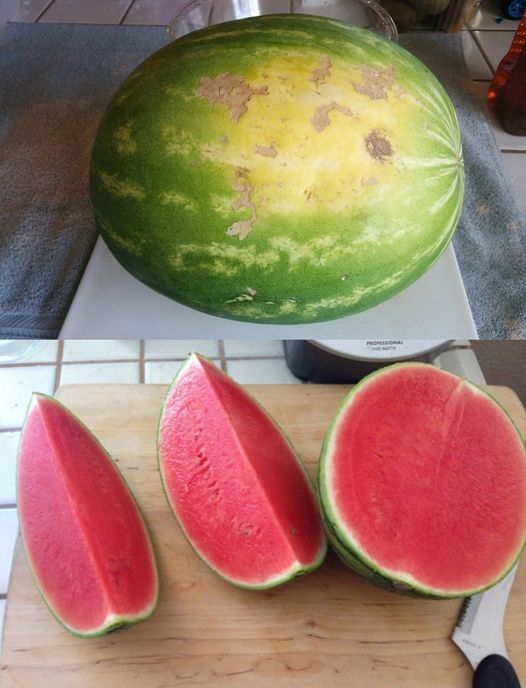Shopping for fruit should be a satisfying experience, not a gamble. Yet, many of us have brought home produce that looked great at the store but went bad within a couple of days. With prices rising and no one wanting to waste money, it’s more important than ever to know how to choose ripe, flavorful fruit that lasts. Fortunately, you don’t need to be an expert or spend a ton of time inspecting produce. With just a few quick tips, you’ll be picking the best fruit every time you hit the grocery store.

1. Watermelons: Skip the Size, Focus on the Signs
When picking a watermelon, it’s easy to assume the biggest one is the best. But that’s not always true. Instead, look for the field spot—the creamy patch on the underside of the melon where it sat on the ground as it grew. A rich yellow or deep orange color in this spot usually means the fruit had time to ripen fully in the sun, which translates to better taste and sweetness.
Next, check for webbing—those brown, net-like scars on the surface. These markings indicate that bees pollinated the flower multiple times, which often results in a sweeter melon. It’s not damage; it’s actually a good sign.
Believe it or not, watermelons can be male or female. Male melons tend to be longer and more oblong, with a higher water content. Female melons are typically rounder and known to be sweeter. So if you prefer a sugary taste, go with a round watermelon.
Bigger isn’t always better, either. Giant melons may look impressive, but the best flavor often comes from medium-sized ones that are dense and balanced in size. Finally, don’t forget to look at the tail. A dried, brown tail usually means the fruit ripened naturally on the vine, while a green tail may mean it was picked too early and won’t be as flavorful.
2. Pineapples: Let Your Senses Be Your Guide
Choosing a ripe pineapple takes more than just a glance. Start by checking the color. Avoid pineapples that are mostly green, as they’re likely underripe. A golden-yellow hue, especially at the base, usually means it’s ready. However, if it’s too bright and golden all over, it may be overripe and mushy inside.
Next, take a look at the leaves. Try gently tugging on one of the inner leaves at the crown. If it pulls out with slight effort, the pineapple is likely ripe. If it slips out too easily, the inside might be overly soft or beginning to rot.
Give the pineapple a gentle squeeze. A fully unyielding one is probably underripe. What you want is a fruit that’s firm but has just a bit of give when pressed. This means the fruit is juicy and ripe but still fresh.
Lastly, smell the base. Turn the pineapple over and take a quick sniff. A sweet but subtle aroma is ideal. If it has no smell, it’s not ripe yet. If the scent is overly strong or fermented, it’s likely past its prime.
3. Cantaloupes: Smell and Feel Your Way to the Best One
Picking a good cantaloupe isn’t hard when you know what to look for. Start by inspecting the surface. Avoid any fruit with visible bruises, soft spots, cracks, or mold. These are signs that it’s already going bad or was damaged during shipping.
The color of the skin also offers a clue. A ripe cantaloupe will have a beige or light tan skin with minimal green. If there’s a lot of green, it still needs time to ripen and might not have developed its full flavor yet.
Pick up a few and compare their weight. A heavier cantaloupe tends to be juicier and more mature. You want one that feels substantial for its size.
Then, test the bottom end—the spot where the stem was attached. Give it a gentle press with your thumb. If it has a little give, it’s likely ripe. If it feels too soft or mushy, it may already be turning bad.
As with pineapples, smell is key. Bring the cantaloupe up to your nose and take a sniff near the stem end. A light, sweet smell is perfect. If there’s a very strong or almost syrupy scent, it might be overripe and possibly fermented.
Final Thoughts: A Few Seconds Make a Big Difference
You don’t have to be a professional produce picker to get the best fruit every time. By using your senses—sight, touch, and smell—and knowing what signs to look for, you can make smarter choices that lead to tastier results and fewer disappointments. Whether you’re prepping for a summer picnic, a family breakfast, or just want your money’s worth, these small tricks will help you bring home fruit that looks good, tastes better, and lasts longer. Next time you’re at the grocery store, spend just a few extra moments checking these details—you’ll be glad you did.





